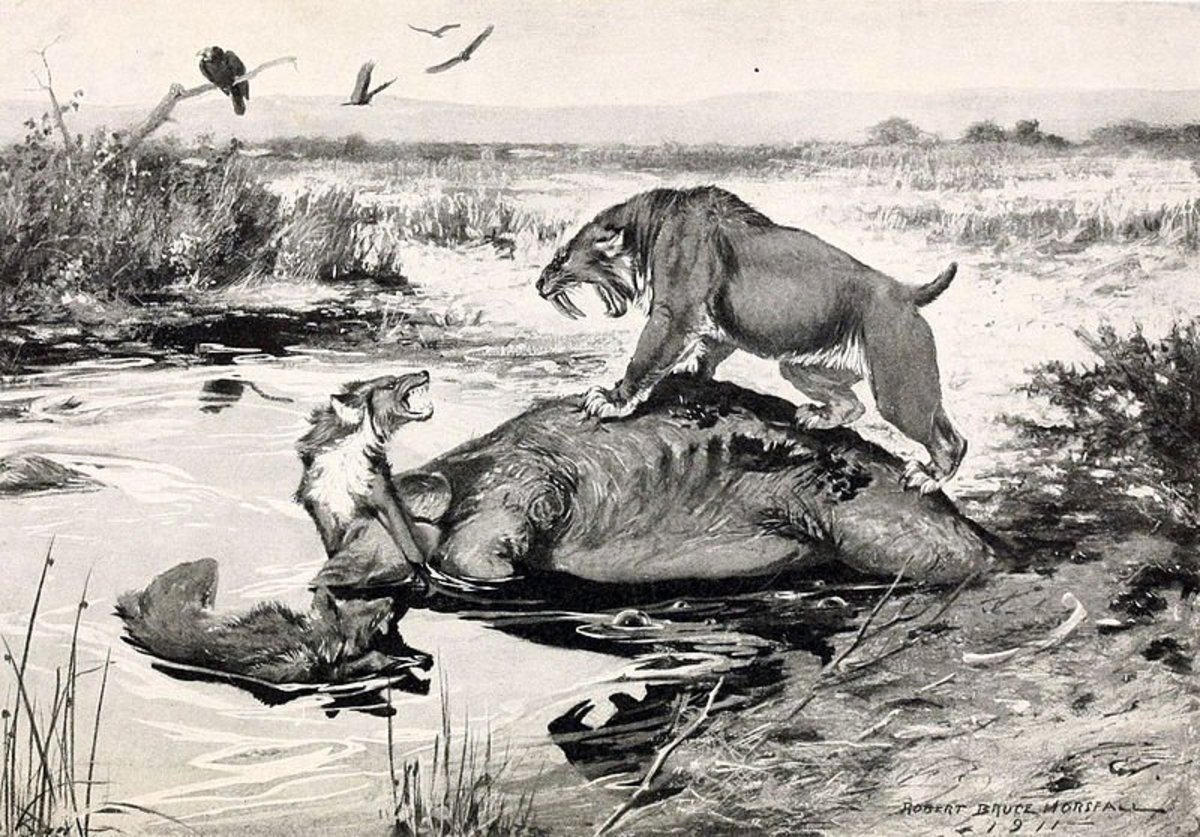The Worst Creature To Run Into During The Ice Age

To be an apex predator, you have to be a predator, as the name suggests. The apex predator, or “apex predator,” is the king of its habitat. This doesn’t mean that life is always good for predators; on the contrary, they are often smaller than their prey.
This is because carnivores rely on herbivores for energy, and typically only get about 10% of herbivores’ energy from plant sources. This makes carnivores often smaller than their prey. To compensate, predators have developed a variety of terrifying tools and weapons, including powerful bites, sharp claws, and pack hunting.
One of the most prominent predators of the Ice Age was the Smilodon, also known as the “saber-toothed cat.” Smilodon’s most notable feature was its enormous saber teeth, which made it one of the most famous extinct animals. When it was first discovered in Brazil over 160 years ago, paleontologists mistook it for a large hyena due to the shape of its molars. But later, when more fossils were discovered, Smilodon was confirmed to be a large cat in its own genus.

Smilodon is divided into three species: Smilodon gracilis, Smilodon fatalis, and Smilodon populator. Smilodon gracilis is the oldest, living about 2.5 million years ago. Smilodon fatalis appeared later, about 1 million years later, and Smilodon populator, the largest, appeared about 600,000 years ago.
Smilodon was very large, especially the species S. populator, with some individuals weighing up to about 470 kg, about the same as an average polar bear. However, Smilodon did not have a large difference in size between males and females.

This species was very powerful with strong bones and well-developed muscles, capable of jumping high and holding prey with large claws. These claws were not only sharp but also very large, helping to hold prey.
Smilodon’s saber teeth were not only long but also designed to inflict severe wounds. They could reach up to 20.3 cm in length, the longest of any saber-toothed cat. Although the bite force of Smilodon was weaker than that of many other carnivores, its saber teeth were very effective at inflicting deep wounds. Smilodon could open its mouth up to 120°, allowing it to strike at the neck of its prey, causing severe blood loss or suffocation.
Smilodon lived in many different areas, from North America to South America, and hunted large animals such as giant bison, mammoths, and also smaller animals. Some evidence suggests that Smilodon may have lived in herds, with evidence from tar pits in California showing multiple individuals trapped together.
Although Smilodon was a top predator, it was not the only one in its environment. It competed with American lions, dire wolves, and giant bears. This competition was not only between species, but also in the scavenging of carrion.
Ultimately, Smilodon became extinct around 10,000 years ago, around the same time as the development of agriculture. The exact cause of the extinction remains controversial, but many believe that the decline of large animals and environmental change caused by humans were the main factors. Smilodon ceased to exist, marking the end of the saber-toothed cats and the end of an era that lasted more than 20 million years.








